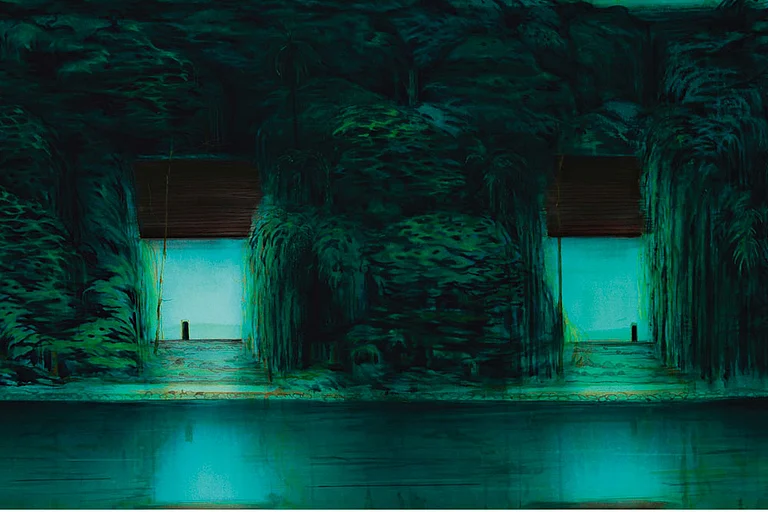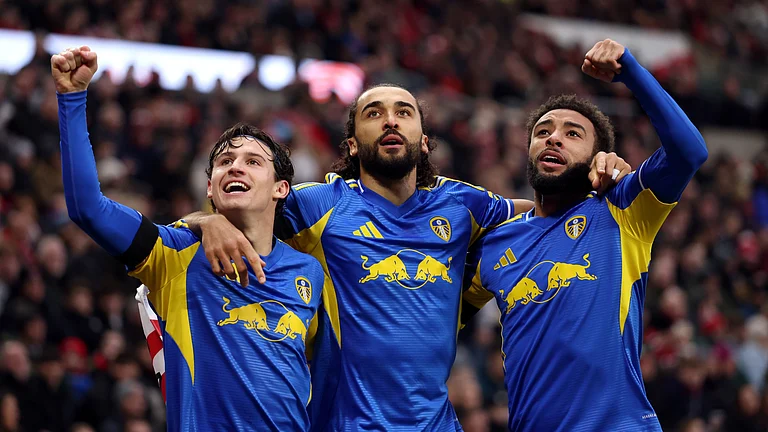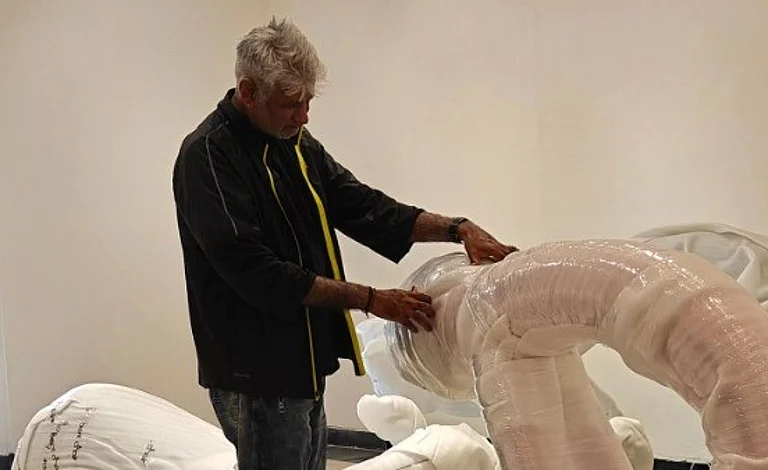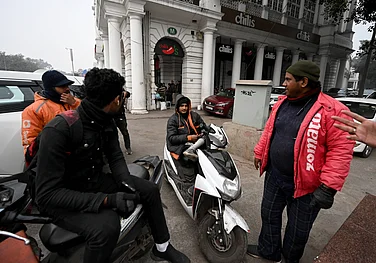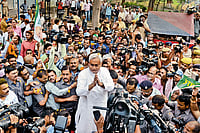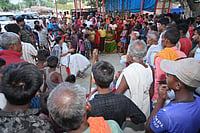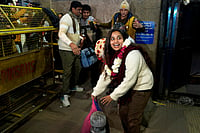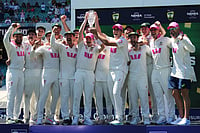“Rap songs give me a feeling of freedom. When I am alone and stressed, I write rap. It heals me,” says 19-year-old Rahul Insane of old Patna, a hip-hop dancer and rap singer.
There are four other equally passionate hip-hop artistes in his group. In small towns and suburbs of Bihar—a state hobbled with low growth and even lower human indices, one can easily find hip-hop artistes.
Originating among marginalised black and Latino youths in the US, hip-hop has traversed a long path—from an expression of frustration to a global youth fashion statement. Now, it’s making waves in Bihar too, with a large section of youths embracing the culture.
Rahul, who wrote his first rap in 2020, is a quintessential example of this drift. “It was the beginning of the Covid-19 lockdown. My father, who drives an auto-rickshaw, was out of work. My family members were not supporting my dream. Things seemed doomed for me,” he says.
One night, as he lay awake in bed till late, thinking of how to contribute to the family income, his own struggle and dreams, etc., these thoughts coalesced into lyrics. He had been fond of dancing since childhood, spending hours watching dance videos on his mobile phone. Hip-hop attracted him, even though he had no idea of its name or history—because he liked the passion of the dancers.
He recollects those days. “It was 2017. I used to go to the discom office to pay the electricity bill every month. There was a dance academy nearby. I would peep through a hole to see people dancing there. Later, my elder brother talked to the academy people. They agreed to teach me hip-hop dance. That’s how I got entangled.”
To chase his dream, he began working two shifts—distributing newspapers in the morning, and running errands at a private clinic. Now, he offers dance classes to meet his own expenses.
His first rap song talks about his struggle with his self, his frustrations, loneliness and misfortunes. He writes:
Apan karna nahi chahta kuch, bolne ka mann par bol nahi pata,
Koi hai nahi paas, jise dil khol dikhata
(Don’t feel like doing anything, want to speak out but can’t
There’s no one near, to whom I can open my heart)
Later in the same song, he writes:
Aaj aaine me dekha maine joker
Kyun apno ne maari mujhe thokar
Aa bolkar, dil kholkar,
Aaj likha maine rap ye rokar
Exam mere sar par, main bolun sar chadh kar
Main rap karun darkar, insane I am badhkar.
(In the mirror I see a joker
Why did my own ditch me
Come and speak frankly
In tears I wrote this rap today
Exam is near, I’m speaking arrogantly
I do rap in fear, am I going insane)
He continued, “I couldn’t get the lyrics out of my head that night, so, at around 2am, I went to the room where my elder brother was studying, and begged him to record the song on my cell phone.”
Hip-hop in Bihar reflects the trend worldwide. There are two clear directions the culture is headed. There is a section that is exploiting its commercial value. These artistes go to TV shows, earn well by doing stage programmes. The other faction is of underground artistes, who are outside the commercial spectrum. Darbhanga resident Rahul Yadav, 18, is one such underground artiste. He started rapping a year ago.
ALSO READ: Songs Of Freedom & Redemption
“Earlier, I used to dance to Bollywood numbers. But last year, there was an underground ‘battle’ among hip-hop dancers in Darbhanga. I went there as an audience, and was exposed to a different kind of dance—something I could immediately connect with—and got hooked,” he says.
He comes from an economically underprivileged family. His father runs a tea shop in the suburbs. To pay for his own classes, Yadav is teaching hip-hop dance to two kids. He is also trying to form a hip-hop group in Darbhanga. He says, “To develop street culture here, I’m looking to form a hip-hop dance team.”
ALSO READ: Wu-Tang Manual For Indie Homies
Unlike Rahul, Khagaria youth Ravi Singh, 29, is a commercial rapper. He writes on social issues like liquor ban, narcotic menace, media trial, Covid-19, youth issues, unemployment, etc. His Covid-19 rap questioned the mismanagement of Chief Minister Nitish Kumar’s government.
Ankhon pe ye patti bandhe kyun baitha Kumar
Ya phir poora ka poora ye system hai beemar
Janta sadakon par roti, bhare hain shamshaan
Arre ab kab jagoge bahre tum, kab hoga nidan
(Why are you sitting blindfolded Kumar
Or is the entire system down with fever
People are crying on roads, dead bodies line crematoria
Are you deaf, when will you wake up, when will the solution come)
He has so far written around 50 songs, and has been appearing for live performances across the state, including capital Patna.

Where’s da party Ravi Singh (left); Dixit Jaiswal
Ravi’s foray into rap was accidental. He was earning well as a freelance anchor when, in 2018, while waiting at a bus stand in Patna, he overheard a food delivery guy getting scolded by a customer over the phone. “The speaker was turned on, so I overheard the conversation. But the delivery boy was unaware of it. After disconnecting, he looked here and there to ensure no one was listening, spotted me and left, sheepishly. His gaze stuck in my mind and I composed and recorded my first rap at the bus stop.
There are few women, though, in Bihar’s emerging testosterone-charged hip-hop culture. In conversation with many artistes, though, I found that some girls have recently started learning the dance moves. Together with the existing patriarchy, families are yet to come to terms with a culture they consider abhorrent.
ALSO READ: Hip-Hop Found A Connect In Pain Of Kashmiris
Most hip-hop artistes seem to follow the global sartorial style—baggy tees and denims, hats and high-ankle sneakers—knock-off brands bought cheap from shops outside railway stations. “I can’t afford branded clothes. So, I buy these from these shops. The complete attire came for just Rs 600-700,” says Insane.
To Bihar’s conservative society, the signature attire itself attracts derision. Insane says their baggy style regularly attracts nasty comments on the street. “The comments are objectionable, and could make many give up hip-hop dancing. But I’m used to these, and don’t care much.”
He added “Insane” to his name after being called mad and clown in his own neighbourhood. “At first, it felt bad, as if I was committing a crime by wearing such clothes. So I added ‘Insane’ to my name. Now, such comments don’t make any difference,” he says.
Unlike in the US, where hip-hop is a result of social segregation, in Bihar, artistes from all caste and social backgrounds are trying to make it big. For many rappers though, backwardness—social and economic—are triggers. Himself a Pasi (SC), Insane’s group has two Doms (SC), a Sonar and a Yadav (OBCs). Darbhanga’s Rahul Yadav is OBC, the kids he teaches are also Yadavs.
But there are rappers from higher castes too. Dixit Jaiswal of Purnea—a music composer for the last seven years who has begun dabbling in rap with songs on Covid-19 and nepotism, says hip-hop culture is growing in the state, and will spread further in the coming days. “Actually, rap and hip-hop are expressions of an artiste’s suffering. Economically and socially weaker sections suffer more, so more youths from these communities are adopting this form.”
Also from Purnea, hip-hop dancer Ayushman Poddar, 20, echoes Jaiswal’s observations. “Youths from backward sections, with families facing financial duress, do not see any bright career options ahead of them. The pain and discomfort is debilitating. Rap and hip-hop offers a vent for their frustrations and suffering.”
Ravi Singh says, “I never tried to see an artiste through the prism of caste. But some rappers do use such language in their songs. And that’s how I find out their castes.”
According to street artistes, 2016-2017 was the breakout year for hip-hop in Bihar, even though the beginnings was unremarkable. “Initially, underground ‘slams’ were few and far between. It increased since 2019. I think in the coming years, Bihar’s hip-hop culture will cross significant milestones,” says Ayushman, who recently organised a hip-hop workshop in Purnea, involving 20 local artistes. The workshop was conducted by renowned hip-hop dancer and director of the Original Street Dance studio, Anto George.
Ayushman explains, “The aim of the workshop was not only to make the artistes aware of the nuances of this dance form, but also to normalise it among the public, so they don’t pass lewd comments at hip-hop artistes for their clothes or dance style.”
A street art, born thousands of kilometres away, is getting a fresh lease of life in benighted Bihar, amid verbal jousts on vulgarity in Bhojpuri and purity in Maithili. Artistes associated with this culture, though, do not get entangled in debates on the eminence of the dialects—a perpetual squabble across the state. For them, more than the language, what is important is their art. At a cusp, it will be interesting to see which way this global idiom goes, under the influence of the local culture.
(This appeared in the print edition as "Listen Without Prejudice")








